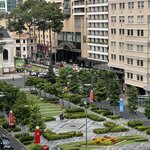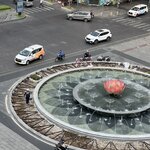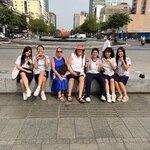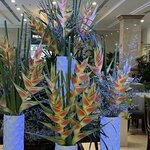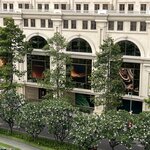Highlights
- Discover the sights, sounds, and flavors of Hanoi
- Hike around the terraced rice fields of Sapa and visit rural villages
- Visit the Gulf of Tonkin and cruise gorgeous Lan Ha Bay
- Explore the UNESCO river city of Hội An
- Tour Ho Chi Minh City and travel up the Mekong Delta
Brief Itinerary
| Day | Highlights | Overnight |
|---|---|---|
| Day 1 | Arrive in Hanoi | Hanoi |
| Day 2 | Hanoi City Tour | Hanoi |
| Day 3 | Hanoi to Muong Lo | Nghia Lo |
| Day 4 | Muong Lo to Mù Cang Chải, Hiking the Rice Terraces | Mu Cang Chai |
| Day 5 | Morning Hike in Mù Cang Chải & Transfer to Sapa | Sapa |
| Day 6 | Hike to Country Villages | Sapa |
| Day 7 | Sapa to Bắc Hà, Hiking | Bac Ha, Lao Cai |
| Day 8 | Visit the Bắc Hà Market & Transfer to Hanoi | Hanoi |
| Day 9 | Hanoi to Lan Ha Bay & Boat to Cát Bà Island | Cát Bà |
| Day 10 | Cát Bà Island to Hanoi, Flight to Da Nang & Hội An | Hoi An |
| Day 11 | Country Cycling & Organic Farm Tour | Hoi An |
| Day 12 | Hội An to Ho Chi Minh City, Explore | Ho Chi Minh City |
| Day 13 | Bến Tre Day Trip | Ho Chi Minh City |
| Day 14 | Depart Ho Chi Minh City |
Detailed Itinerary
Day 1: Arrive in Hanoi

Welcome to Vietnam! Upon arrival at Hanoi's airport, you'll transfer by private vehicle to your four/five-star hotel for check-in. No doubt you'll be tired after the long journey, but after taking some time to relax and unwind you should head out and explore on foot. This modern yet traditional metropolis is well worth it.
Dating to 3,000 BCE, Hanoi is one of the most ancient capitals in the world. That said, it's a mix of the old and the new—a city defined by the contradictions of a rapidly developing yet deeply traditional society. Here glimmering office buildings sit alongside the French colonial Old Quarter. Rarely at rest, the kinetic energy of Hanoi's motorbike-packed streets spills over into the outdoor markets, Hang Gai silk shops, curbside bún chả /bánh mì vendors, and eclectic nightlife scene.
You can start your walk on the streets of Old Town, visiting markets and street vendors, and then take in some local history and mythology with a stroll around Hoàn Kiếm Lake. At the north end of the lake is an arched red bridge leading to Jade Island and the Temple of the Jade Mountain. This temple was built in the 18th century to honor Tran Hung Dao, a military commander who famously repelled two Mongol invasions.
Nearby, in the center of the lake, is Turtle Tower, a small stone tower built to commemorate the Golden Turtle God, Kim Qui, who, according to Vietnamese myth, reclaimed a magical sword from Emperor Lê Lợi in order to return it to the Dragon King. You should know that it's legends like these around which Vietnam's rich culture is based.
After a brief walk and taking in Hanoi's famous sights, feel free to dine out in the Old Quarter. There's no shortage of incredible eateries in this neighborhood that run the gamut from delicious street food to fine dining to trendy fusion restaurants.
Day 2: Hanoi City Tour
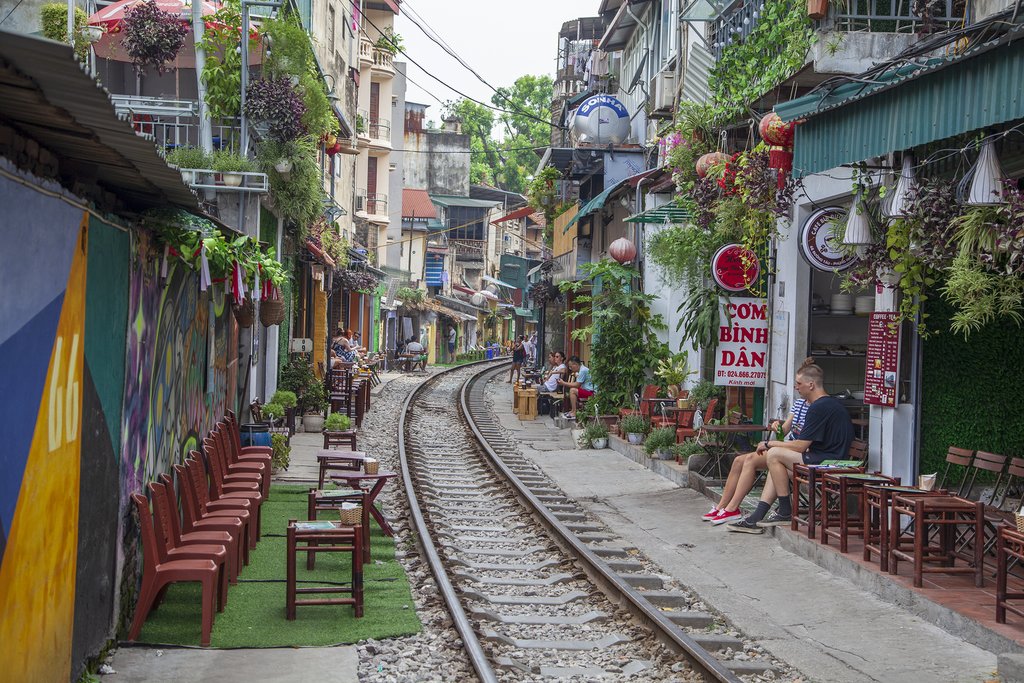
After breakfast, you'll have the entire day to discover Hanoi. The tour begins with a stop at the Ho Chi Minh Mausoleum, the final resting place of the revolutionary leader. Looming over Ba Dinh Square and featuring a grey block design and stone collonades, it's an impressive (and imposing) example of brutalist architecture. Next up is the stylistically opposite Presidential Palace, a hallmark of French Colonial architecture in Vietnam that was built at the turn of the 20th century and is painted canary yellow.
After the palace, you'll see the Temple of Literature, which was built in the 11th century and is dedicated to Confucius. This temple was the first university in Vietnam, and it's still a place where students burn incense and pray at the altars for academic success.
Then you'll head a bit further north in the city to the Cầu Giấy District and the Vietnam Museum Of Ethnology. This massive museum complex aims to preserve cultural heritage by offering information on the 54 different ethnic groups in Vietnam. Some highlight exhibits include full-scale replicas of traditional homes plus ancient artifacts like traditional jewelry and wedding/funeral clothing.
You'll cap the tour with a guided stroll around Hanoi's Old Quarter. There are immense benefits to this type of walking tour because you'll be accompanied by an expert local guide. As they escort you around the streets they'll shed light on the various landmarks and interesting sights. Plus they'll reveal insight into the long and storied history of this unique commercial district, which has its origins almost 2,000 years ago during the Lý and Trần dynasties.
Naturally, no tour of the Old Quarter is complete without indulging in the famous street food culture. It's a great introduction to the gastronomy of the country, and beyond the bún chả and bánh mì vendors, you'll also try some delicious Vietnamese beverages like the famous "egg coffee"—perfect for those who like their daily caffeine jolt combined with a decadent dessert.
Day 3: Hanoi to Muong Lo

After breakfast at your hotel, you'll transfer east from Hanoi to the Muong Lo Valley, leaving the bustle of the city to experience traditional culture in the beautiful Vietnamese countryside. This rural region is home to 17 ethnic minorities, most of whom live in small towns and villages. Your ultimate destination is one such town: Nghĩa Lộ, which is home to a majority Thai ethnic population.
Along the way, however, you'll pass the scenic provinces of Hà Tây, Phú Thọ, and Yên Bái, which abounds with green fields and tea plantations. Speaking of which, to break up the drive you'll stop at Thu Cuc Tea Plantation to see firsthand how Vietnamese tea is produced. Here you'll meet the owner, Mr. Tung, and his family to learn about traditional planting techniques, tea harvesting, and even the drying process. Of course, at the end of the experience, you'll sit down and taste some delicious local tea.
After the tea break, you'll continue on to Muong Lo and Nghĩa Lộ, which happens to be situated in the second-largest rice field in Northwest Vietnam. Thai migrants first came to this area 700 years ago to grow rice and built traditional wooden houses of iron and bamboo. You'll meet with members of this ethnic group and observe their rich culture and daily routine on a one-hour walking tour around the village. You'll overnight at a local guesthouse.
Day 4: Muong Lo to Mù Cang Chải, Hiking the Rice Terraces

In the morning, you'll depart Muong Lo by bus, following roads that pass along the green Hoàng Liên Sơn Mountains and rice paddies until you arrive at the rural district of Mù Cang Chải and its principal town of the same name. In fact, this area is known for its terraced rice paddies, which shine brilliant shades of green and gold during harvest season.
Also here is a network of hiking trails that run through the rice paddies, cornfields, and tea plantations. They've been used by locals for years to travel between villages, and today you'll embark on an easy five or six-hour country trek down these paths. The hike kicks off on a trail leading through a forest to the village of La Pán Tẩn, which is considered to have the most beautiful rice terraces in the entire region.
From here you'll walk along the terraces to three villages populated by the Hmong ethnic group. After a picnic lunch, a car will pick you up for the transfer to the guesthouse where you'll have dinner and spend the night.
Day 5: Morning Hike in Mù Cang Chải & Transfer to Sapa

After a short transfer by vehicle to the nearby town of Ngã Ba Kim, you'll embark on a three-hour morning hike through rice terraces and cornfields to traditional Hmong villages. Then, you'll hop back in the car for a two-hour drive up the mountains and over the famous Tram Ton Pass, which at 6,715 feet (2,047 meters) is the highest mountain pass in Vietnam.
Of course, you'll be able to stop for photo opportunities and enjoy the fresh mountain air. The views certainly don't disappoint, as from the pass you can see all the way out to the 10,311-foot (3,143-meter) Fanxipan Mountain, which is known as “the Roof of Indochina."
In the afternoon, you'll arrive in the town of Sapa, which is one of the most beautiful mountain towns in the country. Surrounded by steep slopes and terraced rice paddies, the town itself is full of colorful ethnic markets and buildings that are historic remnants of the French colonial era. After checking into your hotel, you'll have the remainder of the day free.
Day 6: Hike to Country Villages

Wake up early for a day of light trekking (5-6 hours) around the breathtaking Sapa Valley. From town, you'll head down the mountain about six miles (10 km) on a road passing along terraced rice paddies and green hills. The scenery will be even more stunning due to a thin layer of morning mist, which adds an ethereal quality to the Sapa countryside.
You'll hike along a narrow trail amid the terraced fields and cross the Mường Hoa River on your way to the Black Hmong village of Lao Chai. After walking along the river for a time, you'll cross a suspension bridge and arrive at another village, Tả Van Giáy. Here you'll visit a fascinating collection of ancient rock carvings depicting everything from images of man to decorative patterns.
Later in the afternoon, you'll return to your hotel in Sapa. But the day isn't over yet: from town, you'll hike up Ham Rong Mountain. Once you reach the top you'll be treated to a panoramic view over Sapa. You'll have the remainder of the day free and can enjoy dinner in town.
Chat with a local specialist who can help organize your trip.
Day 7: Sapa to Bắc Hà, Hiking

After breakfast, a driver will meet you at your hotel for the three-hour transfer to Bắc Hà, in Lào Cai Province. This otherwise tranquil village comes alive once a week during its Sunday market, which is the largest ethnic-minority market in the region. Comprising these groups are the Flower Hmong, Dao, Tay, Phù Lá, and Nùng peoples. They live a peaceful life steeped in rural farming tradition that goes back 200 years, raising crops like maize, rice, cassava, and growing fruit trees on the mountain slopes.
Upon arrival in Bắc Hà, you'll check into your hotel. Then get the blood pumping with an easy two-hour hike into the country and ethnic villages to get a sense of the local culture. The hike from the village of Thải Giàng Phố, for example, passes through a fertile valley and flourishing green vegetable gardens, cornfields, and of course elegantly beautiful rice terraces. After the hike, you'll make the short transfer by vehicle back to Bắc Hà.
Day 8: Visit the Bắc Hà Market & Transfer to Hanoi

Today you'll get to visit the highlight of Bắc Hà: its massive Sunday market. More than a marketplace, it's also a social gathering for the various ethnic minorities living in these remote highland villages. Here they meet up, swap stories, and enjoy a few drinks while trading their goods. All in all, it's a lively and colorful atmosphere.
Of course, there's the chance your travel itinerary won't put you in Bắc Hà on a Sunday, in which case there are other nearby markets on Saturdays and Tuesdays. Regardless, after experiencing some convivial local culture, you'll hop in a car for the six-hour drive to Hanoi. Once you've checked into your hotel you'll have the remainder of the evening free.
Day 9: Hanoi to Lan Ha Bay & Boat to Cát Bà Island

In the morning, a driver will meet you at your hotel for the transfer two hours east to Lan Ha Bay, located on the Gulf of Tonkin. Lan Ha Bay is actually a part of the more well known Hạ Long Bay, although located just south of it. Still, here you'll find a locale just as gorgeous and filled with the same towering karst islets and jade waters that are so famous in Hạ Long. Upon arrival at the pier, you'll board a cruiser where you'll enjoy a welcome cocktail followed by a safety briefing. After that, you'll get underway.
As the ship cruises the tranquil waters, you'll enjoy a delicious lunch on deck before arriving at one of the famous floating villages of the region. Here you'll disembark and have a chance to learn about the life of the residents, which naturally revolves around the fishing trade. This is followed by an optional water activity like a traditional bamboo boat ride or kayak excursion.
As the boat heads to Cát Bà Island, the largest island in the entire archipelago, you can take in the gorgeous sunset over the water from the deck of the boat. In the evening you can even feel free to join in some local squid fishing. Once finished, you'll retire to your cabin where you'll spend the night.
Day 10: Cat Ba Island to Hoi An

Wake up early and head to the upper deck to witness one of the bay's famous golden sunrises. The perfect compliment to such a beautiful sight is a morning Tai Chi class followed by relaxing with a cup of coffee or tea. You'll then enjoy breakfast/brunch while the boat sails back to the pier.
After transferring back to Hanoi by private car you'll get dropped off at the airport where you'll catch a 1.5-hour flight south to Da Nang. This waterfront city isn't your final destination, however. You'll then transfer another half-hour by car down the central coast to Hội An, which is one of the most well-preserved ancient cities in the country. After checking into your hotel, you'll have the remainder of the day to tour this historic river town on foot.
Walking Hội An's ancient streets you'll see why it's so celebrated. This UNESCO World Heritage port city boasts over 2,000 years of history, with its heyday occurring from the 7th-10th centuries when it was a major player in the spice trade with Indonesia. By the 1600s, Hội An was a thriving international port, and you can see remnants of this in its Chinese temples, Japanese merchant homes, and covered bridges.
Day 11: Country Cycling & Organic Farm Tour
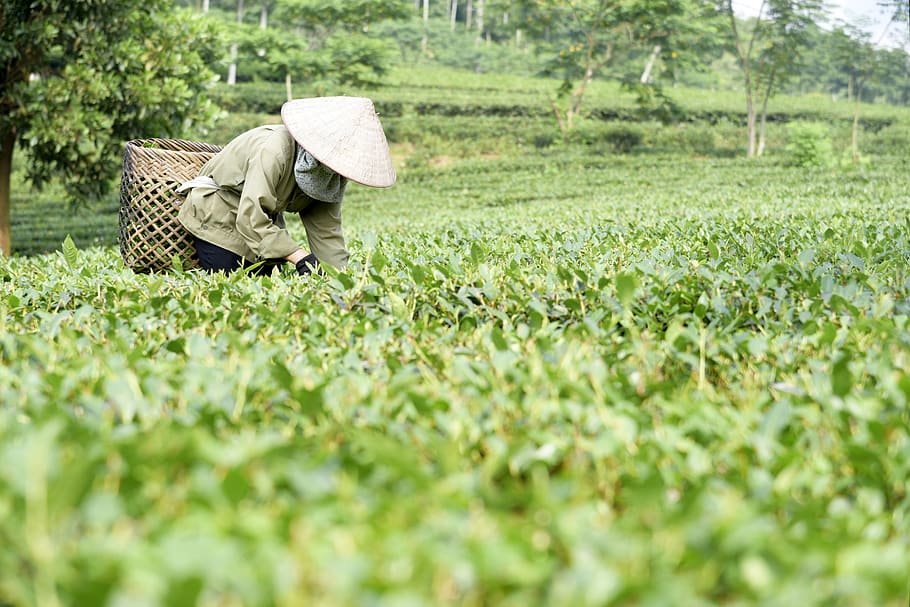
Get ready for a special eco-tour around Hội An. In the morning, a driver will pick you up at your hotel for a quick 30-minute drive to the countryside village of Vong Nhi. Here you and your guide will hop on bicycles and embark on a four-mile (six-km) ride. During the trip, you'll pass many stunning and varied landscapes that range from the tranquil countryside to green rice paddies to coconut forests lining the riverbanks and even fish and shrimp farms.
Eventually, you'll arrive at the Thanh Dong, a three-acre organic farm that sustains 11 local families. The farm is unique in that it uses no chemicals—only all-natural materials. On a tour, you'll hear the inspirational stories of the families and learn about their traditional farming methods and even join in for some gardening activities like preparing organic fertilizer, raking the ground, sowing herb seeds, and watering/picking vegetables.
After that, leave the farm for a 30-minute boat ride down the Do River in traditional basket boats to a waterfront restaurant. Before eating you'll enjoy a short demonstration and fun cooking class before sitting down to a freshly prepared lunch. Then you'll return to Hoi An, where you'll have the remainder of the day free to continue touring the town.
Day 12: Hội An to Ho Chi Minh City, Explore

At the appropriate time, you'll transfer to the airport in Da Nang for a 1.5-hour flight south to Ho Chi Minh City, once known as Saigon. Despite a communist revolution and devastating war, the city has retained much of its unique cultural mix of Asian and western traditions. Here you'll find colonial-era Art Deco buildings, Buddhist temples, hidden alleyway eateries, outdoor night markets, Chinese pagodas, 21st-century skyscrapers, and hotels and restaurants to accommodate every budget.
The biggest change to Ho Chi Minh City over the last few decades is that it's only gotten bigger and busier. The streets here swell with mopeds as the sidewalks overflow with vendors selling everything from delicious street food to golden lucky cats. It's a great place to explore, and after transferring from the airport to your hotel and checking in, you can head out and do just that.
Historic landmarks you'll want to visit include the 19th-century Gothic/Renaissance Saigon Central Post Office, Notre Dame Cathedral (built in the late 19th century with materials imported from France), and the Opera House, which was built in 1897. You could also visit Reunification Palace (also known as Independence Palace), the former home of the president of South Vietnam, which was taken over when Saigon fell to the North Vietnamese in 1975.
You can end the tour with a visit to the Buddhist Thien Hau Temple and the Ben Thanh Market for some souvenir shopping.
Day 13: Bến Tre Day Trip

Today you'll experience firsthand the lifestyle lived by those on the Mekong Delta. In the morning you'll leave from your hotel to the waterfront province of Bến Tre. Upon arrival at the Hung Vuong Pier in Bến Tre City, you'll hop in a boat for a ride down a tributary of the Mekong River.
As you travel amid the thick mangrove forests of this waterway, you'll see the morning hustle of fishing boats and coconut cargo ships passing back and forth. A stop at a traditional brickworks reveals how local workers still make bricks the old-fashioned way: by hand. After that, it's a stop at My Long, a village famous for the tasty rice cakes made by its residents. While the recipe is secret, you'll get to see the process as the villagers make the cakes from rice paper, followed by a sampling of these treats.
Back on the water, you'll travel down canals lined with looming coconut palms. Here you'll stop and visit a coconut workshop to see the various stages of coconut processing, from removing the husk to the peeling, which is all done by hand. You'll then stop at a honey-bee garden for a snack of fresh fruit and honey tea accompanied by local music. Then it's a visit to a candy mill to enjoy some sweets followed by a visit to the country home of an artisan who makes traditional sleeping mats.
You'll get to experience some of the stunning countryside when you embark on a bike ride (or motorized scooter trip) through the coconut groves and vegetable gardens around the river. Then take a sampan rowboat along a tranquil canal shaded by palm fronds to a riverside restaurant where you'll stop for lunch. After lunch, you'll return to Hung Vuong pier by motorboat and transfer back to Ho Chi Minh City by car. You'll then have the remainder of the day free.
Day 14: Depart Ho Chi Minh City

Take the morning to enjoy one last stroll around Ho Chi Minh City. At the appropriate time, you'll transfer to the airport to catch your flight home. This concludes your grand Vietnam adventure. Until next time!
More Great 14-Day Vietnam Itineraries
Looking for more inspiration for your trip to Vietnam? Check out these other 14-day Vietnam itineraries, with outdoor adventures, cultural trips, and best-of tours to hit the highlights.



